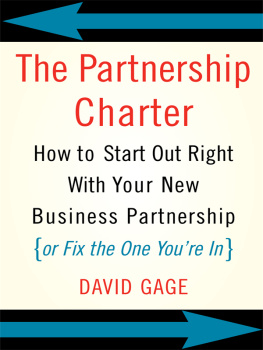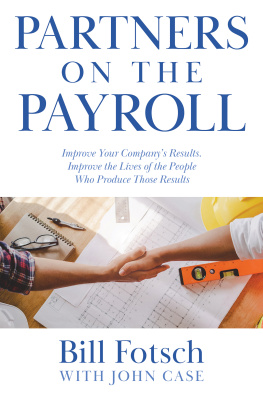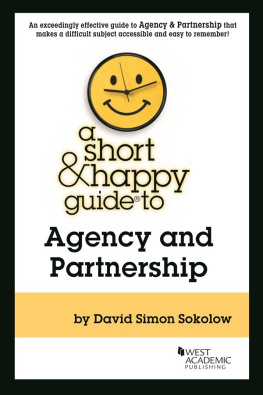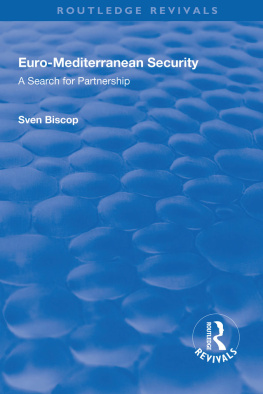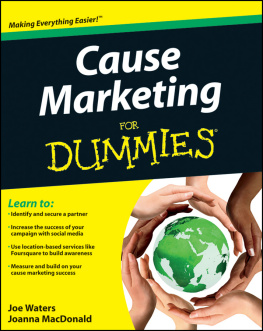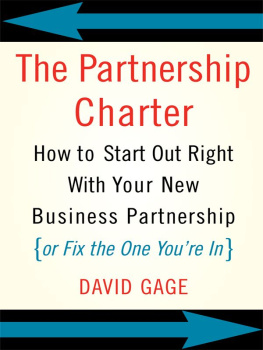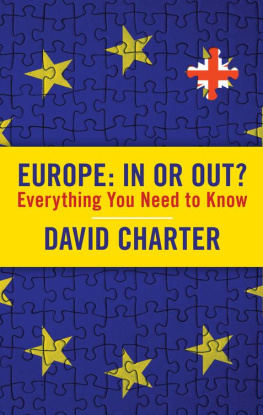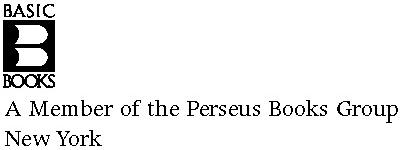The Partnership
Charter
The Partnership
Charter
How to Start Out Right with
Your New Business Partnership
(Or Fix the One Youre In)
DAVID GAGE
Copyright 2004 by David Gage
Published by Basic Books,
A Member of the Perseus Books Group
All rights reserved. Printed in the United States of America. No part of this book may be reproduced in any manner whatsoever without written permission except in the case of brief quotations embodied in critical articles and reviews. For information, address Basic Books, 387 Park Avenue South, New York, NY 10016-8810.
Books published by Basic Books are available at special discounts for bulk purchases in the United States by corporations, institutions, and other organizations. For more information, please contact the Special Markets Department at the Perseus Books Group, 11 Cambridge Center, Cambridge MA 02142, or call (617) 252-5298, (800) 255-1514 or e-mail .
Designed by Brent Wilcox
Set in 11-point Apollo MT
Library of Congress Cataloging-in-Publication Data
Gage, David.
The partnership charter : how to start out right with your new business partnership (or fix the one youre in) / David Gage.
p. cm.
Includes bibliographical references and index.
ISBN-10: 0-7382-0898-1 (alk. paper)
ISBN-13: 978-0-7382-0898-5 (alk. paper)
eBook ISBN: 9780786725267
1. New business enterprisesManagement. 2. PartnershipPsychological aspects. 3. Interpersonal relations. 4. Industrial management. I. Title.
HD62.5.G334 2004
658'.042dc22
2004003992
I was blessed with many wonderful teachers. Six of them will
always stand out because of their enormous talent and because
they cared deeply for my well-being. I dedicate this book to them.
John Shrake
Sister Elora Schmidt
Philip A. Morse
Michael Piechowski
Martin A. Safer
Colin Frank
PREFACE
When people ask me why I started a company whose sole purpose was resolving disputes among business owners, I tell them that my life, like those of millions of others, has been influenced by business partnerships. The quality of partnerships can have a lasting effectfor better or worseon the people involved, and I wanted to increase the odds that those effects would be for the better. The purpose of this book is similar: to introduce potential and current partners to a process, the Partnership Charter, that can help them create partnerships that will realize their dreams, not their nightmares.
I had three formative experiences with partnerships. The first occurred when I was around eight. My brother Larry was a thirteenyear-old entrepreneur with a paper route and, in my head at least, I was his junior partner. I believed I had the best partnership deal imaginable. Larry had all the responsibility. He was 100 percent responsible for ensuring that his customers got their Appleton Post-Crescent delivered to their doorstep seven days a week come rain, shine, or two feet of snow. As his junior partner, I was free to accompany him whenever I wanted. As I recall, that was only on Saturday mornings in the spring and fall when the weather was perfect, and I could ride my bicycle with him in those peaceful predawn hours. Other than that, my job was to help Larry count the money. Everything in those days was paid for in cash, and some customers paid in silver dollars. Larry had so many silver dollars, I thought he was the wealthiest brother anyone ever had. I was thrilled with my share of the profitswhatever it wasbecause it came in silver dollars. Partnership seemed like a pretty sweet deal.
Around the same time, my second brush with partnerships began when my father decided to join my mothers father and her four brothers in the familys construction company. That decision gave all of us kids front-row-center seats for the drama that is family business. I learned that grown-up partnerships were much more complex and difficult than my childhood idyll.
All family businesses are fascinating partnerships with amazingly complex dynamics. Family businesses form the bulk of the worlds economy. But despite their marketplace success, they are notoriously unstable at the partner level. The dynamics that I witnessed at our frequent family gatherings, which finally resulted in years of litigation that I will describe in the book, were often a spillover from the workplace. My curiosity about those partner dynamics was largely responsible for my early interest in psychology and steered me into specializing in family therapy in the 1980s.
It was my third exposure to partnerships, however, that changed my career path and ultimately led to this book. It involved my wife, Cathy Bock, and her partners. As owners of a very successful travel agency, they had all the correct legal documents. Nevertheless, they hadnt agreed on some of the finer points of their deal and tried to finish negotiating them after becoming partners. Naturally, their lack of agreement strained their ability to work together, as did their different personalities. Before long, two of the partners sued Cathy and the fourth partner for breach of fiduciary duty. They dragged me into their dispute by having me deposed. Sitting in their lawyers office, I answered questions about what I knew and when I knew it, with a transcriber recording every word. The absurdity of the proceedings was overwhelming. Two partners couldnt get along with the other two because theyd never completely worked out their arrangement, and yet they were trying to resolve their problem by attacking with blunt, legal instruments.
Approximately $100,000 in attorneys fees later, Cathys partners dropped their complaint and agreed to be bought out. Reflecting on the experience, which I later came to understand was a garden-variety partner dispute, I decided to figure out a more rational, efficient way for partners to resolve their differences. That led to the founding of Business Mediation Associates in 1990.
The original goal of Business Mediation Associates (later renamed BMC Associates) was to help co-owners resolve their conflicts. Given the complexity of the issues I had seen in both my familys business and my wifes partnership, I knew this type of work necessitated a team approach to be effective. So we have always had a team of mediators with expertise in business, law, finance, and psychology. While mediating disputes, we saw how our clients had gotten into their predicaments. I knew it was crucial to figure out how to pass on that knowledge to other partners, especially because there were no books on the way to establish healthy partnerships. I knew that if Cathy and her partners had had a resource when they were forming their corporation, or if my family members had had guidelines for planning their ownership transition, a lot of agony and expense could have been avoided. Today thousands of books are available to help business owners with almost every conceivable aspect of starting and managing a business, from building employee teams and selecting the right office furniture to choosing the best legal entity. It seems no stone is left unturned, except for the one that sinks so many companies, namely, owners who cant work effectively together.
People in businesswhether its travel, construction, manufacturing, or consultingare specialists in what they do; theyre not specialists in how to be partners. The Partnership Charter is a short course in just that, how to be partners. Its practical, not theoretical. It walks people through the topics they need to discuss and negotiate to develop a comprehensive understanding of how the partnership is going to work. The charter process focuses on both the interpersonal and business issues that need to be addressed to remove the ambiguity from their deal, which often concerns some sensitive issues such as money, decision making, ownership, fairness, and peoples styles or values. So often, as was the case with my wife and her partners, those issues are dealt with but not thoroughly enough. Partners have a tendency to leave a sliver of ambiguity in their arrangement, which grows until one day it becomes a monster overshadowing the partners every conversation. Those delicate issues and the sore spots that have caused partners pain have been built into the Partnership Charter process so they will not be overlooked.

